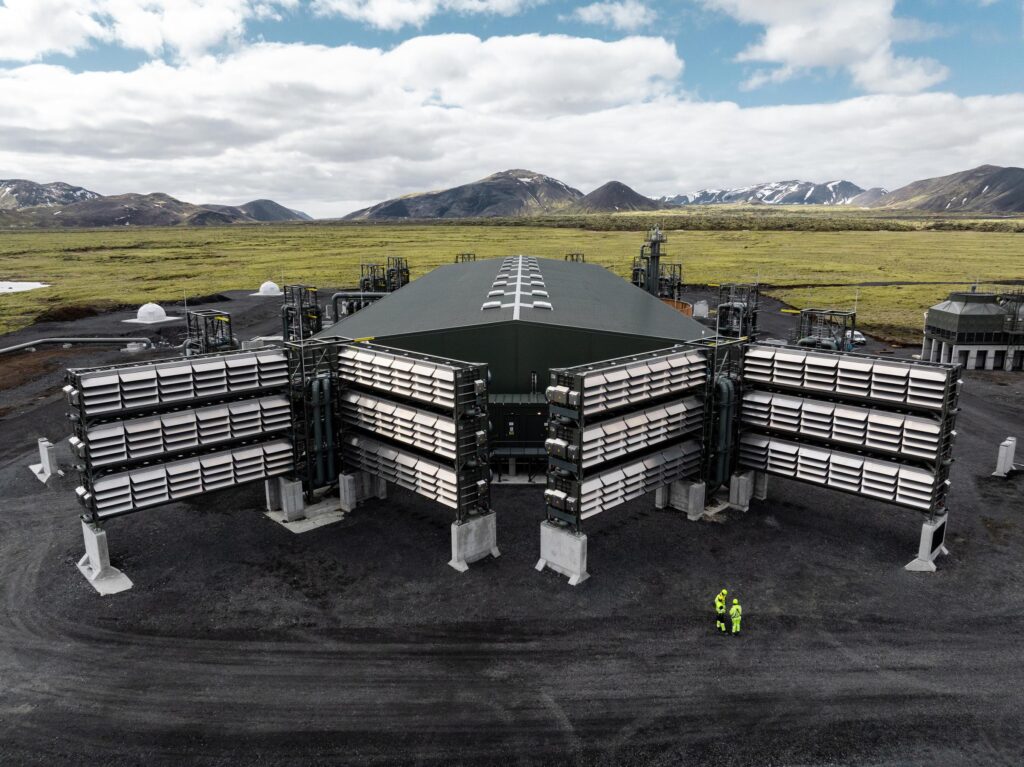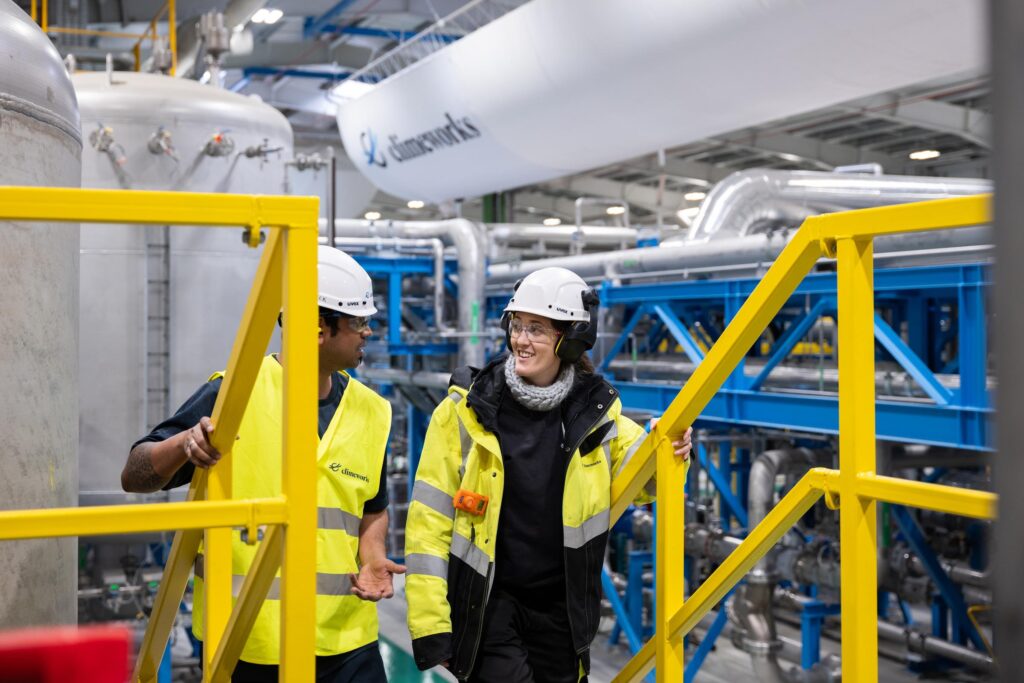
With a nameplate capture capacity of 36,000 tons of CO2 per year, Mammoth is the second commercial facility of Climerworks and is about ten times bigger than its predecessor plant, Orca. At the time of its launch in 2021, Orca was the largest direct air capture and storage and was a first-of-its-kind facility with its industrial-scale application of DAC+S technology. The start of construction of Mammoth was announced soon after in mid-2022.
The plant has successfully started to capture its first CO2, with twelve of its total 72 collector containers installed onsite. Climeworks uses renewable energy to power its direct air capture process, which requires low-temperature heat like boiling water. Once the CO? is released from the filters, storage partner Carbfix transports the CO? underground, where it reacts with basaltic rock through a natural process, which transforms into stone, and remains permanently stored. Climeworks verifies and certifies the whole process by independent third parties.

Climeworks’ Mammoth plant from the inside (source: Climeworks)
Learning by doing
Mammoth is built on Climeworks’ seven years of field experience to increase plant performance, efficiency, recovery and ensure better availability to maximize CO? capture through the year. With Mammoth, Climeworks will gain further operational field experience, and its 180 science and R&D experts will continue large-scale testing and development.
“Starting operations of our Mammoth plant is another proof point in Climeworks’ scale-up journey to megaton capacity by 2030 and gigaton by 2050. It is exemplary of our continuous R&D investments to further optimize our technology and gain maturity through on-the-ground experience. Constructing multiple real-world plants in rapid sequences makes Climeworks the most deployed carbon removal company with direct air capture at the core,” said Jan Wurzbacher, Co-founder and Co-CEO of Climeworks.
Megaton carbon removal by 2030
Mammoth is another milestone in Climeworks journey to reach megaton carbon removal capacity by 2030 and gigaton scale by 2050. Climeworks is part of three megaton direct air capture hub proposals in the U.S., all of which were selected by the US Department of Energy for public funding for a total of more than 600 million USD. The largest one, Project Cypress in Louisiana, was granted an initial 50 million US dollars in March to kickstart the project.
Climeworks will replicate its megaton hubs worldwide to reach a global scale. The company actively develops projects in Norway, Kenya, and Canada and explores further potential direct air capture and storage sites.